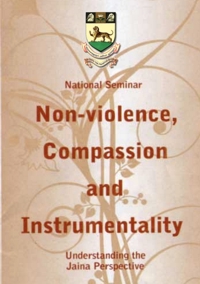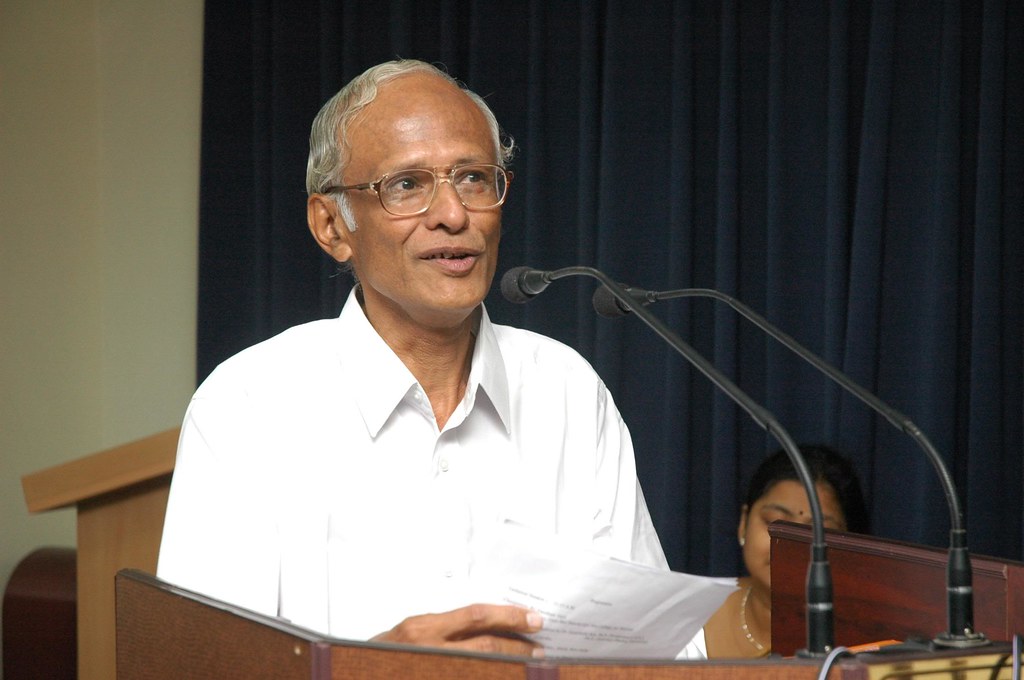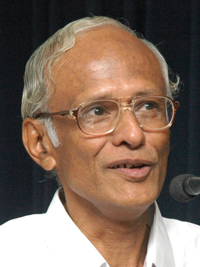 | Non-violence, Compassion and InstrumentalityA Jaina PerspectiveSeminar organized by the Department of Jainology of the University of Madras, 13 and 14 February 2009 Chennai, India |
14.02.2009
2.03 Compassion: Concept and Practice
Sage Ramalingar, the 19th century Divine Messenger of Tamil Nadu, reverently called ‘Vaḷḷalar’ is widely known for his enlightening philosophy of universal brotherhood and reverence to life. He has made a remarkable contribution to the understanding of the concept and practice of compassion in his treatise entitled Ceevakarunya Ozhukkam. A similarity in emphasis on non-violence can be seen in the philosophy of Bhagavan Mahāvīra and Sage Ramalingar. It is interesting to note that Sage Ramalingar mentions Arhat as one of the names of the One Supreme Lord and also proclaims that the path of non-killing is the path of God.
Compassion is the mental participation of being simultaneously affected with the same feeling of suffering of another person or thing. It includes the inclination to spare or help to reduce the sufferings and provide satisfaction or happiness. Compassion is the natural characteristic of the soul. It is human experience that the very sight of or knowledge of the sufferings of those born of the same womb melts the soul. Similarly the suffering of unknown persons - those who belong to different religions or nations or speak a different tongue and are neither foes nor friends - also melts the soul. Sage Ramalingar says that this melting of the soul is known as compassion and it is the age-old right of the soul.
Human sufferings are caused by hunger, disease, accidents, fear poverty desire and killing. A happy, peaceful and prosperous life is assured for all the living beings in this world when people refrain from killing other living beings and actively participate in mitigating the sufferings of fellow-beings. It is the holy order of the Merciful God that all human beings, men and women, young and old, the elevated and the lowly, the householder and the unmarried and the ascetics are required to actively participate in reducing the sufferings of their fellow-beings.
Sage Ramalingar lays emphasis on non-killing and feeding the poor and the hungry. He explains that those who do not kill living beings and feed the hungry will readily help the people suffering from other causes. A householder of modest income is not justified in feeding only his family and forsaking the hungry that approach him for food. Neither is he justified in feeding only the hungry and forsaking his family. Truly, he should economize his household expenditures and feed both his family and the hungry. A wealthy householder, depending upon the extent of his income has to feed his family, relatives, servants, friends, neighbors, guests, strangers and enemies as well as domestic animals and plants owned by him. Pretentious expenditure on family or social functions and rituals are to be avoided and instead the poor shall be fed on those occasions. The time and effort and money spent on conspicuous consumption if used for reducing the sufferings of the poor, will benefit many and bestow immense benefits on the donors.
Compassion in the widest sense of the term includes concern for the inanimate also. Sage Ramalingar presents a story to explain that compassion is more pervasive. Two old men were walking along the street. One tripped over a ball of dust which was shattered into pieces. On seeing this, the other old man swooned. When revived he was asked the reason for swooning. He replied that he swooned because the ball of dust broke into pieces.
The practice of compassion requires the nurturing of certain sattvic characteristics such as non-killing patience, calmness, self-control and subjugation of the senses. One who does not kill other living beings, endures pain or suffering, maintains balance of mind in prosperity and adversity, controls raw and wild emotions and masters the senses is able to overcome egoism. Such a person is able to serve as a willing instrument of the Merciful Lord in helping the poor to overcome the sufferings. Where compassion flourishes, knowledge and love will flourish as adjuncts and so a helping tendency will appear. As a result all good things arise. When compassion disappears knowledge and love will disappear and the so helping tendency also disappears. As a result all evils arise. Slowly the worldly discipline disappears and rule of the jungle creeps in.
Sage Ramalingar says that to the enlightened people compassion to all living beings is the worship of God. Saint Ramalingar was Compassion Incarnate. He says in one of his 5818 songs:
I languished each time I beheld a crop withering away. I felt deep sorrow for the destitute whose hunger was not appeased even after begging in each and every house. My heart gave way at the sight of those suffering from incurable diseases.
Thiru Arutpa
Ramalingar says compassion is the only way to obtain God’s grace and all acts done without compassion are mere tricks. According to him only those who secure the key of compassion can open the golden gates of the Heaven, enter in and enjoy the everlasting Bliss. The salvation for the souls is only through compassionate service to the poor and so compassion is indispensable for life in this world and for the eternal life to be lived hereafter.
May all the beings live with happiness.
Sage Ramalingar
Reference
-
Annamalai, SP. The Life and Teachings of Saint Ramalingar, Bombay: Bharatiya Vidhya Bhavan, 1988.
-
Ganapathy R. trans. The Universal Vision of Saint Ramalinga, By Ma. Po. Sivaganam, Annamalai Nagar: Annamalai University, 1987.
-
Ooran Adigal, ed. Thiru Arutpa [Songs of Grace]. – Urainadai Pakuthi [Prose works] Vadalur: Samarasa Sanmaarga Aaraychi Nilayam. 1978.
-
Ooran Adigal, ed. Thiru Arutpa [Songs of Grace] - Poetical works, Vadalur Samarasa Sanmaarga Aaraychi Nilayam, 1989.

 Prof. V. Namasivayam
Prof. V. Namasivayam